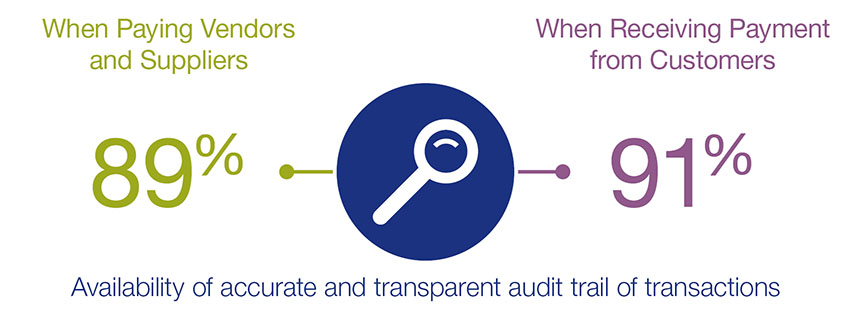
How Everyday Funding can improve cash flow

Digital trends poised to reshape hotel payments

The possibility of internal fraud is a real concern for many executives, regardless of the organization's size. Popular news articles point to high-profile cases of corporate card abuse, asset misappropriation and various examples of employee fraud. The narrative leaves many middle market executives, especially those who are hesitant to adopt a corporate card program, steadfast in their belief that such a program could leave their company vulnerable.
However, for companies managing tight margins, understanding where money is made and lost is critical for business success. Corporate cards, by their very design, offer increased visibility and control over other payment forms — including employees using personal credit cards — making them an ideal choice for managing expenses.
U.S. Bank partnered with Protagonist to better understand the beliefs held by middle market financial executives and their staff when it comes to corporate card policy, expense management, corporate card products, and benefits. The study found misconceptions among those hesitant to adopt a corporate card program. Top among the list of misconceptions is the belief that corporate cards are a gateway to fraud and encourage overspending.
With the recent high profile cases of employees treating their corporate credit card like a personal ‘slush’ fund, many hesitant adopters believe that the risks of a corporate card program outweigh the benefits. But many of the cases in the news are exaggerated examples of fraud and point to a lack of controls and personal accountability.
There are, however, more subtle forms of fraud, like exaggerated expense reporting, that can have a significant impact on an organization’s bottom line if left unchecked. In fact, a recent survey by webexpenses found that employee expense fraud is on the rise — and employees are actually having quite an easy time committing it. Examples include billing for travel and expenses that never materialized, seeking reimbursement for items never purchased or purchased and returned, and purchasing items for personal use. And because the fraud is subtle, the claims fall through the cracks and raise no red flags.
“IPR doesn’t just help you initiate payments and eliminate manual steps. It will help you find the cheapest, or fastest, or both, payment rails on a certain date, with customized security.”
Much of the conversation centers around the risk corporate cards pose. But when implemented with well documented and communicated expense management policies, corporate cards can offer significant financial, operational and security benefits.
Corporate cards feature tools that provide visibility into individual payment transactions so you can easily understand who’s spending what and where as well as controls that govern the type of expense a card is used for. These tools can also help you quickly recognize patterns of fraudulent behavior and non-adherence to travel and expense policies that would be hard to identify with a manual process and next to impossible to identify when employees use their personal card for business expenses. Middle market executives agree — corporate cards provide excellent tracking and visibility on transactions.2
Replacing paper-based processes with an integrated corporate card program and expense management solution eliminates manual processes for tracking, and analyzing payments. This in turn can reduce administrative costs, speed up payments, and improve internal policy compliance, reconciliation and expense analysis.
Paper based payment methods are inefficient and prone to fraud making it more difficult to identify and control expense report fraud. By directly importing charges made on a corporate card, an organization knows the exact expense amount. It’s more difficult to inflate expenses or otherwise manipulate receipts.

However, implementing a corporate card program is only the first step. To safeguard against misuse, a corporate card program must be implemented in conjunction with a defined expense management policy. The expense management policy should clearly articulate allowable expenses, and be communicated broadly so employees become part of the expense management process — not part of the problem.
Often, there’s a clear line between claiming legitimate expenses and abusing the system. But without controls in place, there’s no way to identify the difference.
Related content


